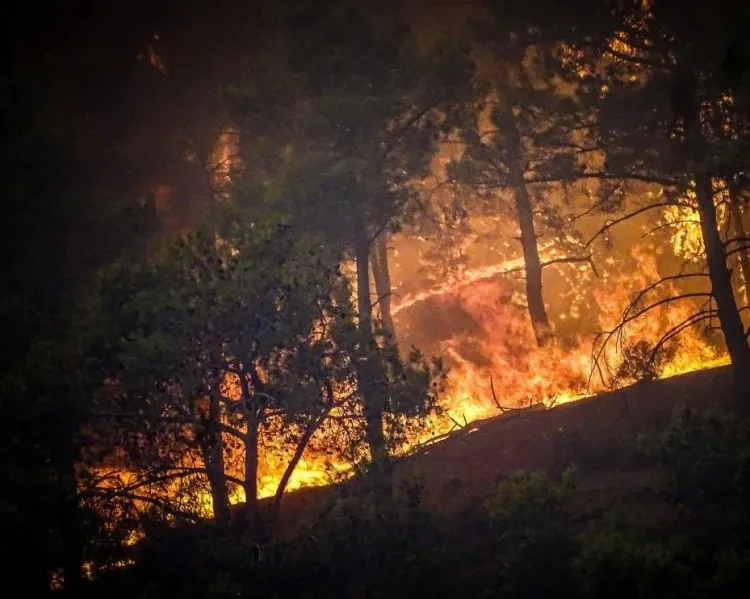Are Europe’s Wildfires Doubling the Average Risk into September?

Synopsis
Key Takeaways
- 439,568 hectares burned this year in Europe.
- Current wildfires are more than double the 19-year average.
- 1,628 fires recorded since January.
- Carbon emissions estimated at 14.11 million tonnes.
- Extremely high fire risks predicted into September.
Brussels, Aug 14 (NationPress) The wildfire season in Europe has devastated an astonishing 439,568 hectares thus far this year, which is more than twice the 19-year average for this time of year, according to the Joint Research Centre (JRC) of the European Commission.
This figure includes fires exceeding 30 hectares identified by the EU's Copernicus Emergency Management Service, as reported by the Xinhua News Agency.
Since the start of the year, authorities have documented 1,628 such fires, a significant rise from 1,089 during the same timeframe last year. The associated carbon emissions are estimated to be around 14.11 million tonnes of carbon dioxide, as per the JRC's latest weekly report.
The risk of fire weather remains high. A seven-day outlook for the period from August 11 to 17 indicates conditions ranging from extreme to very extreme across much of the continent, particularly in the northwest of the Iberian Peninsula, large parts of France, the Balkans, Greece, Romania, Bulgaria, Slovenia, Austria, and Hungary.
Increased fire risks are also anticipated in Sweden, parts of Norway, and eastern Finland, according to the JRC.
Seasonal trends indicate a challenging end to the season. Forecasts for September show temperatures expected to be above average across Europe, with the largest deviations in France, northern Italy, and Hungary. Meanwhile, rainfall is predicted to be below average in many areas of southern and central Europe, including France, the Balkans, Poland, Denmark, and southern Sweden.
Additionally, Greece has faced devastating wildfires. On Wednesday, officials ordered widespread evacuations in Patras, the nation's third-largest city, as a wildfire in the southern Peloponnese spread into residential neighborhoods.
Residents were relocated to safe shelters, and evacuations were also carried out at a children's hospital and a nursing home as a precaution, according to local media Ekathimerini.
The mayor of Patras, Konstantinos Peletidis, stated that the fire's rapid spread was exacerbated by insufficient firefighting resources. Preliminary assessments indicate that the blaze has also destroyed around 550 vehicles at the Patras Customs Office.
Fire Brigade spokesperson Vassilis Vathrakogiannis remarked during a briefing late Wednesday that “the situation remains challenging,” per the Greek official news agency AMNA.
He reported that crews were combating 109 active fires nationwide, with 48 new forest fires recorded in the last 24 hours; 38 of these were quickly brought under control. The largest active fires were located in Achaia, Preveza, and the island of Chios, while Zakynthos and Kefalonia each faced two fronts.
Authorities estimate that the wildfires over the past two days have consumed approximately 10,000 hectares across Greece, including 4,000 hectares on Chios, 2,000 hectares in Achaia, 1,800 hectares near Filippiada in Preveza, and 1,700 hectares on Zakynthos, according to the National Observatory of Athens.









